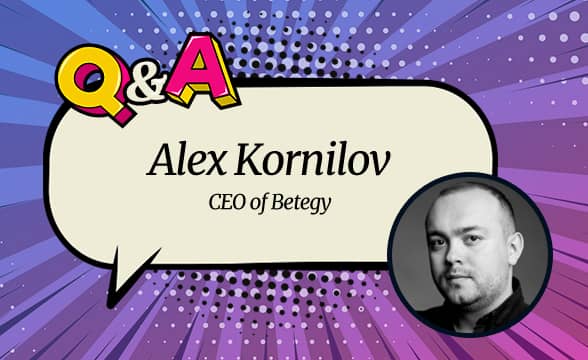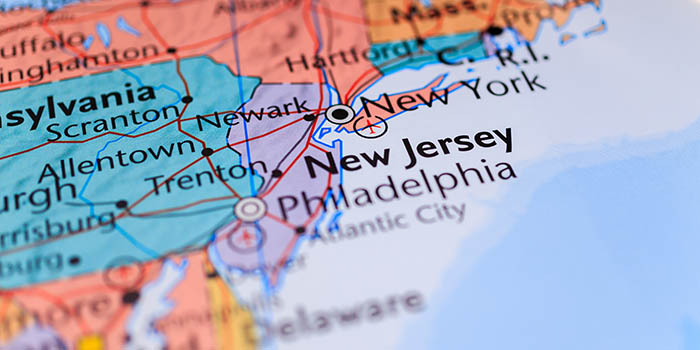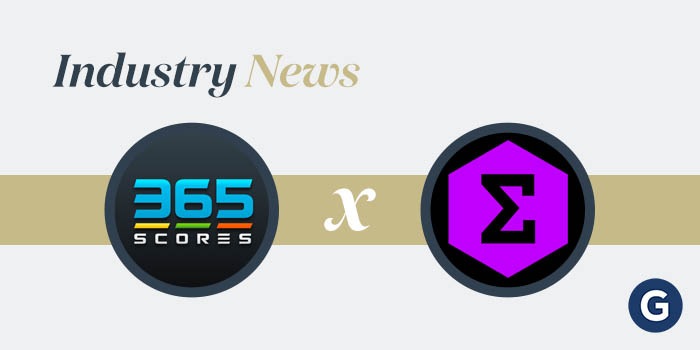Betegy’s Alex Kornilov on How Technology and Data is Set Power US Sports Betting

We sat down with Betegy CEO Alex Kornilov to discuss the widespread changes the sports betting industry has undergone and the specific expertise Alex’s company brings to the table. In 2021, we are witnessing an unprecedented convergence of technology and media companies in a bid to create a well-rounded experience that engages with consumers in a new and exciting way.
Leaning on technology has allowed betting businesses to remain competitive and set new trends that appeal to consumers. Nobody is going to stick around and wait for half a minute to receive live betting odds, says Alex, arguing that the technology to deliver quick, on-demand solution is (almost) here.
Betegy’s own footprint on the quickly-changing sports betting landscape is intriguing and there are big developments coming up next.
Q1: How has the sports betting industry changed between 2018 and 2021? What has the involvement of big tech companies been in the sports betting industry?
A: For me there are two main events so far that have shaped the development of the United States sports betting industry. The first one was obviously its legalization, although even before that, a lot of efforts were being put into sports betting.
This was certainly a surprise for me. Since I was busy building our EU operations, the US news came as something new for us. I’m sure plenty others had knowledge in advance, but for us, we were suddenly looking at a situation where we said “hey, it’s time to go, it’s time to move west.” The second thing that has changed a lot of things recently is obviously the COVID-19 pandemic.
I would say that betting companies’ retail operations were significantly challenged. The online segment also saw some changes as well. For example, there was a shift of attention to casinos.
Sports betting companies lost from 30% to 60% of their revenue. And, on top of this, we have all the newest and emerging markets. Sure, some people would object and say that the United States shouldn’t be treated as a new market since sports betting has been around for many, many years one way or another.
Of course, this is true but we are now seeing a new development in the history of sports betting as a whole, which completely changes the scenery. It has a completely different structure from what is happening in Europe, for example, in terms of deals and functions.
It pushes the whole industry forward and I would say that the US is building a new type of unique betting industry where we see a lot of technological cooperation between media, tech, and betting.
That is driving new interest by venture capital (VC). And now, if you think about some of the big DFS companies in the United States, such as DraftKings and FanDuel as well as Yahoo Sports and ESPN Fantasy portals, they are all technological companies.
Think about it. Even to manage one million users, you need to have a very good infrastructure, engagement, and all the tools that are created by tech companies rather than betting companies, I would say.
And now, we see legislation catching up and everyone wants to be media and betting. Media companies going into the betting world and vice versa. Now they go hand-in-hand and what we will see soon is that these companies will be just one entity.
We obviously have regulations and certifications to get into the market, but after that it gets very interesting. Fans are ready for a new way of betting and there are technologies that can make this possible. It’s no longer just a line, where you bet on a single fixture, and that’s it.
Let’s take an example with BetMakers which is entering the US market. BetMakers is an Australian betting company that specializes in horse racing – and brought the first fixed-odds horse racing to the US, which was not possible previously, because it was very hard to manage the lines.
So, it was pretty much state-based. Now, BetMakers are so confident that they are managing the odds so correctly and so precisely that they are able to go and provide fixed odds betting for the first time in the United States, and this is amazing.
To make this happen you need to have data transparency and reliable providers, you need to have customer awareness, and betting operators at horse racing tracks should be able to accept those bets as well. It’s very interesting and it’s a recent development in the US market and I am very happy about this.
Q2: You’ve been doing sports event predictions since 2012 and have gone into sports betting around 2018. How are big leagues able to leverage their data? When you compare Europe and the United States, what’s the essential difference in leveraging that data?
A: Yeah, leagues are finally starting to get something back from their assets, which is, by and large, their data. You are touching a pain point of mine here that has to do with the European versus United States industry.
Let’s say soccer, for example. There is a big mismatch when it comes to who owns the rights and what data they own in Europe. You have different sponsors in different countries, and then you have all those legal things to think of and everyone manages their own appearance and their own brand and data.
Then you have leagues which manage the data, but leagues don’t necessarily own the data of the clubs, so in Germany would be one thing, but in another country it would be something completely different. It’s a headache.
“Think about it. Even to manage one million users, you need to have a very good infrastructure, engagement, and all the tools that are created by tech companies rather than betting companies, I would say.”
Alex Kornilov, Betegy CEO
In the United States, however, you have the one league which manages all data and rights. You could go on the teams’ websites because the leagues basically give you a website for each team, and then it’s easier to make business.
I would argue that it’s much easier to sign big corporations. Do you want NFL data? Sportradar is there – they sign this and voila. In Europe, that’s very hard to do because everything is so fragmented.
So, if you look at it this way, the data revolution in the United States already happened years ago in that many had cracked what they needed to, and could do with data, yet they lacked the technology to monetize it for betting collaboration. This has changed now, and of course everyone is now eyeing sports betting to the extent allowed by regulation.
I have some partners in the United States and when we talk with some data companies, which collect stats and other pertinent information, they all want to get into sports betting because the revenue there is higher.
Q3: With three years of regulated sports betting markets in the United States, how has Betegy’s way of establishing relationships evolved?
A: So, let me give you some context. When I wanted to study the US market and see what opportunities we had there, I secured some budget to go and visit in place, talk to the right people and see what the outlook was. I needed to put a certain amount of time and money to study the market and understand its potential.
The first thing anyone would notice is the legal part in the United States. If you are a sports betting supplier, for example, you are supposed to go through a licensing process. You need to go through all the legal parts that your software is used only in states which are legal and allow sports betting.
“The data revolution in the United States already happened years ago in that many had cracked what they needed to, and could do with data, yet they lacked the technology to monetize it for betting collaboration. This has changed now, and of course, everyone is now eyeing sports betting to the extent allowed by regulation.”
Alex Kornilov, Betegy CEO
In the United States things are much stricter when it comes to suppliers. So, our clients come to us and they ask if we can comply with all regulations in all states we/they operate in. So, if we talk to an operator that wants to partner up, and they are in the US, we go through all ten states or however many they are running in at the time of the deal, state by state, and talk regulatory compliance.
We have to ensure that the software is built in a way that there is no way for it to make any errors and show betting odds in unregulated markets. Basically, geolocation should work one-hundred percent.
Even though we did this in many jurisdictions in Europe, it was completely new in the United States. The legal aspect of things is one of the most important aspects of what we do and one that has changed the most.
For example, our clients know that we are not just a European company that comes to the US and is acting without prior knowledge and understanding – we are just the opposite.
Obviously, the talk about betting is also growing. At first, companies were just looking at it from afar, but now everyone is trying to generate revenue through it. For example, we have the big media channels approaching us and asking if we know how to engage betting audiences with data-driven content in order to drive their operator partnerships.
Interestingly, that was three or four years ago, when media channels were already anticipating the big legal move that green-lit sports betting in the United States. They wanted to start developing their products back then. It was a bit hush-hush because those companies didn’t want to talk about it too openly.
Q4: Personalization is basically Betegy’s bread and butter. You can take the data; you can synthesize it you can put it out there in minutes. Does that present a challenge when you have to be quick in creating marketing products and at the same time make sure it stays on the regulator’s good side?
A: It’s definitely safer for operators to go with technological solutions rather than trying to use designers to constantly churn out marketing assets. Now, if we take an average-sized betting operator, you will have numerous marketing assets to generate.
The content itself will be valid for a few hours or for a few days maximum. You have finals and big events that will have a bigger lifespan, but usually sports marketing assets are “fast-moving” goods.
To cover five events per week, you have 50 different touch points with your customer. I am not talking about personalization here, because personalization should also factor in who is active and who isn’t, who is making big deposits and who makes small deposits, so let’s leave these specifics out of the picture for a moment.
“It’s definitely safer for operators to go with technological solutions rather than trying to use designers to constantly churn out marketing assets.”
Alex Kornilov, Betegy CEO
You need at least three to four days to do all of these things with an army of designers, so at least ten to 15 people. The speed is so great and everyone is trying to do as much as possible that and designers are human and they can place the wrong information on the marketing assets, precisely because of the pace of work.
In our case, as a technological solution, the initial integration is longer because you cannot just snap your fingers and go. You have to spend anything between weeks to months to be compliant with all available regulations.
“Our clients know that we are not just a European company that comes to the US and is acting without prior knowledge and understanding – we are just the opposite.”
Alex Kornilov, Betegy CEO
It goes even deeper. You have to think about what shows and where and for how long and this kind of compliance is difficult. And look, compliance is very important to our partners in the United States. People come to us and straightforwardly ask us – “do you have people who do compliance?”
We talk with major broadcasters, and they say “We have 150 original channels and we want to be sure that one content won’t end up appearing on another one. How do we do that?” They want to know how much exposure we give to each betting operator, where, and when.
We needed a certain solution to make sure that the person responsible for scheduling this content knows what and when goes live. So, believe me, when I say – technology is much more efficient and reliable in these matters.
Just think about the UK when you had the cases of companies that were fined because of their affiliates using copyrighted content, for example. So, with Betegy you can avoid these risks by managing specifically what goes live.
When Betegy opens up affiliate programs, for example, we will have an affiliate manager who knows exactly what is happening and what content is being put forward making us compliant with all requirements for each jurisdiction.
Q5: When you create and visualize data, is it tailored to the more competitive side of sports betting or recreational consumers as a whole? Or is there just a golden standard that benefits all parties the way they want to use it.
A: Let’s see. Let’s say 100% who are betting on sports, we will have 5% who are probably constantly winning, or winning very frequently so to speak. Those are “professionals” who don’t really care about what we can provide them with. They have their own betting strategies and possibly tools, systems and models.
Betting operators know these guys by name. Then you have around 20%, which will be more enthusiastic about the “competitive side” as you called it of sports betting. They will explore different models, stats, and so on. Ultimately, they will win some and they will lose some.
I would say those guys are still inclined to use their own sources as well. Then we have the other 75% left who we can call “recreational bettors.” You know the type of people who bet on their home team because they are fans.
They come for the entertainment factor. You want to focus on these consumers who are the biggest part of the audience that sportsbooks cater to. It’s fair to say, I think, that sportsbooks are looking to attract those types of bettors.
The ones who genuinely enjoy the activity and want to stick around – not the bonus seekers or the “sharps.” They want to appeal to recreational bettors more so than any other type. But to attract these people you need to come up with a very straightforward engagement. It has to be engaging, but it also has to be short.
This is what we specifically help operators to achieve and produce content for. Obviously, we can produce visualizations of complex things, such as heat maps and other more in-depth analyses, which we do when needed, but the regular sports fan would probably fall asleep if you overwhelm them with too much data.
Then again, the US market is more data/stats-driven and consumers there appreciate data, which makes me very happy because we can push more of this more sophisticated (yet accessible) type of content.
So, if I had to sum up, I would argue that we do not cater to the “betting professionals.” They have their own world. They need an excel table. However, for people who bet on sports recreationally, it’s a story.
They are much more interested in the journey than the result. They don’t care where they are placing their money, pretty much. Are they betting with William Hill or someone else? It doesn’t matter.
But what’s happening now is that sports bettors are now saying “I am with X brand because I like the guy in the commercial.” It’s more about how operators market rather than the ability to place a bet these days.
If you take a look at betting promotions right now, they are disappearing. At first operators were pointing out their honesty and transparency. That was a focal point of their marketing efforts, then they went to bonuses and promos, but even bonuses are now playing a less impactful role in how a brand is perceived.
It’s just harder and harder to get clients based on bonuses. So what do you do? You start creating content. And, as we said before, betting companies, slowly become media companies, and this is where we are helping them.
Q6: Can you take this automated approach and scale it to automated video generation or animated video generation?
A: The possibility to generate video content on our platform is available since 2018. We have a big personalized video content project coming up in summer and it will be about horse racing and it’s kind of very cool, and it will be tailored to every customer, but more about this – later.
Initially, we did this video content for our European clients. Our idea was to create video content and scale it, and that’s never been an issue. The problem, though, was that back at the time video was a pretty heavy piece of content.
So, basically, you were not able to use a video the same way you were to use an interactive picture. This has all changed now. Thanks to faster bandwidth we can see videos now becoming the same content form as pictures were a few years back because of how quick they load.
“[Operators] want to appeal to recreational bettors more so than any other type. But to attract these people you need to come up with a very straightforward engagement. It has to be engaging, but it also has to be short.”
Alex Kornilov, Betegy CEO
Video is now growing and one expects all content to be animated. Pictures already look boring. We can generate both short and long videos, and we also have the option to generate a short video based on a picture to replace it, because people expect to see and hear movement and sounds.
I would argue video content will dominate in the next five years. The only content that will be generated and would actually convert a significant part of the consumers would be video content.
We also came up with a new compression technology that allowed us to scale down a video from 50 to 60 Mbytes down to just two to three Mbytes for the same HD footage video. So, generation is faster and bandwidth consumption much smaller.
Actually, it’s an interesting story how we came up with this. When we started working with retail operators, there were retail locations that lacked high-speed broadband internet, which meant people were based in locations where you just couldn’t push any video. Our clients were telling us “we don’t have enough bandwidth to push the content through the router to the screens.”
Q7: Have you been moving forward with this type of visualization for the retail segment in the United States?
A: You see, it’s all been happening in the wrong year, but we do. I can’t tell you too much now, but one month or two months from now, we will be physically present in retail locations in the United States with interactive content, and it’s cool. I think retail is the next big thing that will be disrupted by technology.
Just think about the outlets outside of the betting industry that already use various technologies that allow them to customize the offer for you. The same thing can be happening for retail betting venues.
Q8: You said that you are covering retail in the “wrong year,” probably referring to the pandemic. Have you been expanding into other verticals? Is there demand from operators for esports and casino gaming and how Betegy’s data can be used to add value to their offering?
A: In the last four weeks, I have been approached by four big companies that deal with casino gaming specifically. They are basically asking us what innovation can be brought to casinos and how data can be personalized.
Effectively, it comes down to this – how can we build a content strategy? What do we need to do to attract new audiences? How to introduce predictive analytics there? How to run multi-brand companies when you want one single operation for all your brands.
“I can’t tell you too much now, but one month or two months from now, we will be physically present in retail locations in the United States with interactive content.”
Alex Kornilov, Betegy CEO
The first thing I noticed when COVID-19 hit was that our customers approached us asking to shift certain attention to casino products. We quickly started to shift our resources to cater to these needs because casinos still require a lot of content there, starting with simple banners through more dynamic animations, bonuses, and personalized promotions.
And then you have esports. I would say esports is still sports, but there is one big difference. The pace in esports is so much different. Basically, it goes like this: you sit down and you cannot take your eyes off it because it’s so quick.
You have so many data points on the screen. The data updates are supposed to be instant. A lag of one second is not acceptable. When we started working with esports partners we started simple – general statistics and analytics.
Now, the only challenge here is relevancy. How quickly can we update the odds? Usually, operators are not that fast and we are in the same boat with them, because they need to find a quicker way to get the odds and we have to find a quicker way to visualize them.
It’s very interesting. What I am saying here is that esports will push the requirements for other sports way higher. If in soccer you have a 20-minute delay to the announcement in esports it’s just a few seconds, but not just esports.
American sports also have a role to play here, because they are data-driven and they have been so for many years now. Americans are crazy about data. Take for example one of our partners in the United States. They collect data 150 times per second for basketball, for example.
Now, obviously, you don’t need this type of speed for the editorial content, right, but what you need it for is real-time adjustments for betting. I think younger audiences are way more tech-savvy than anyone else.
They like to consume content quickly and from multiple sources at the same time, and they expect this from esports but also from other sports as well. So, if they go to watch a soccer game and have to wait 20 seconds for data, this isn’t going to appeal to them. Basically, younger generations will expect the same service.
Q9: What’s the next step for sports betting legalization?
A: This is predictive analytics in customer behavior. We already have it live in many areas of our lives. Now, Betegy is only interested in the legal parts where predictive analytics is applicable.
There are many applications for it for both regulators and businesses in fact. So, on the one hand, businesses can benefit from it because it will be built on data and businesses will be able to analyze consumer behavior. So, when you have a customer who is known to bet on a certain event, but they have been dormant, you can reactive that customer before the event, and I think this targeted approach is kind of cool.
And, actually, every big company is now working on predictive analytics, and designing assets that are tailored to what is necessary, such as reactivations for example. Now, this is one way to look at it.
What’s more interesting is the legal environment. What I think makes sense is for regulators to jump on this and have the predictive analytical models for problem behavior.
For years now regulators have been keen to solve this issue and the solution is finally here – you can use predictive analytics to do that. As soon as regulators begin to understand what predictive analysis of addictive behavior is, they would start to use that data to see when normal behavior tips into addiction.
Obviously, this is a bit of a controversial question, but at least betting operators can mitigate their risk levels and help consumers. I think regulators may soon require operators to run this type of predictive analytics.
Stoyan holds over 8 years of esports and gambling writing experience under his belt and is specifically knowledgeable about developments within the online scene. He is a great asset to the GamblingNews.com team with his niche expertise and continual focus on providing our readers with articles that have a unique spin which differentiates us from the rest.















